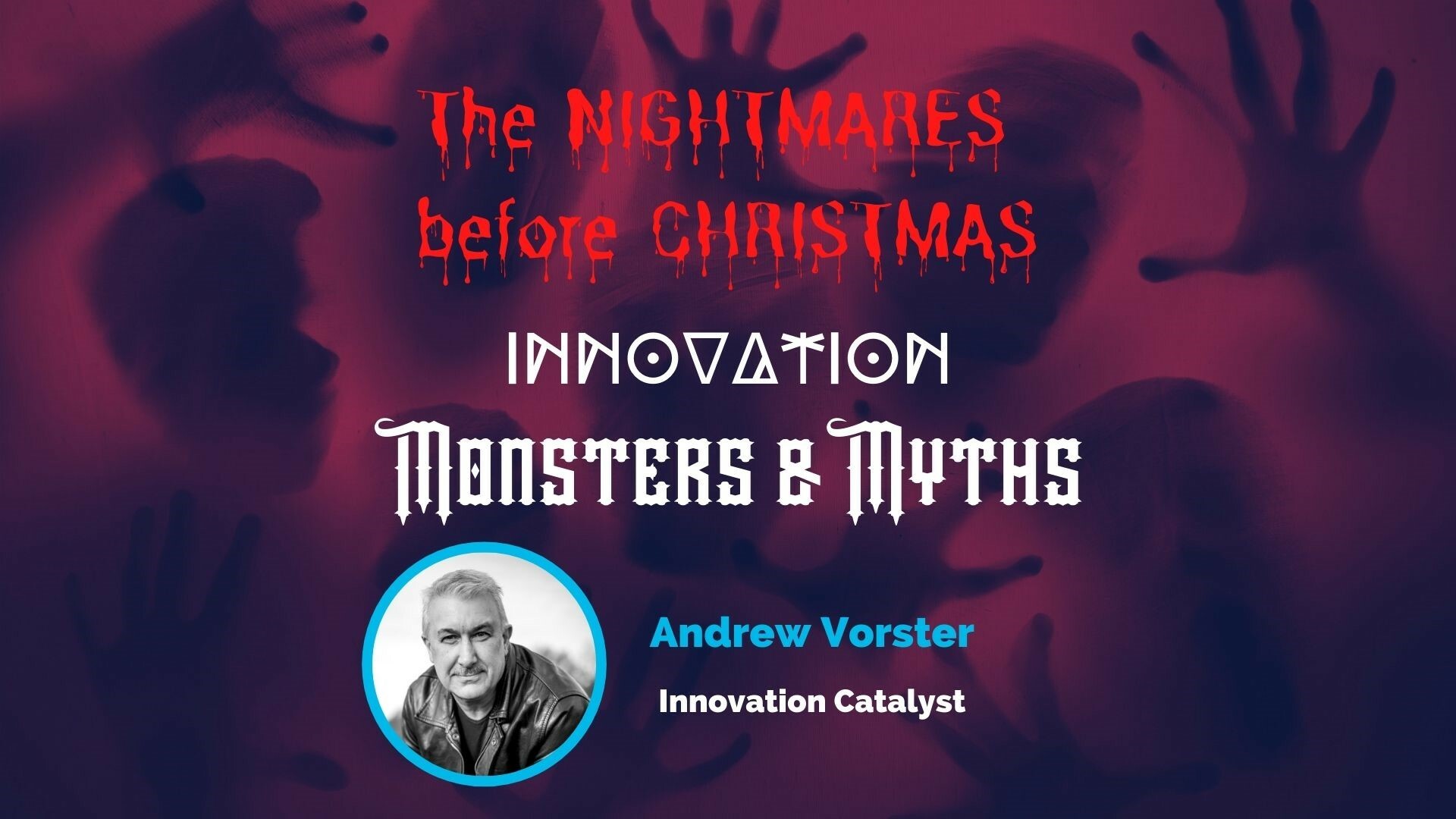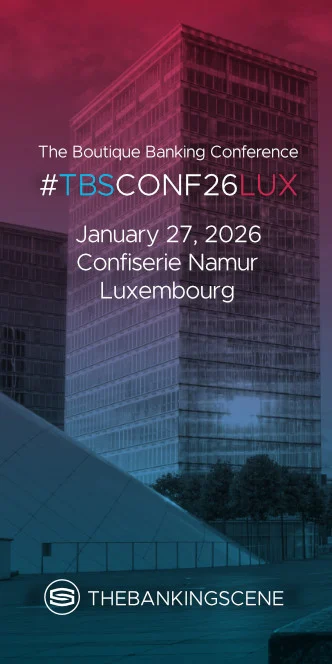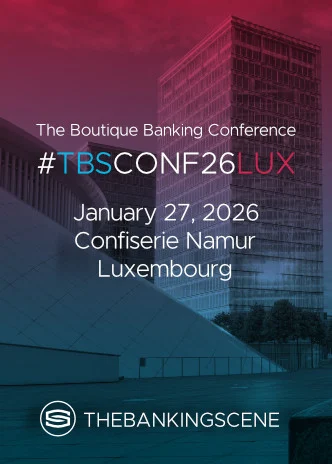
Insights & Opinions
The Nightmares Before Christmas - Monsters and Myths of Innovation
Thu, 17 Dec 2020

We have all seen and experienced more change, transformation and innovation during 2020 than any period within our lifetimes – which includes the heady, boom-and-bust days of the “dot-com era” if like me you are old enough to have lived through them!
But in my personal opinion, in many ways we are still at the very beginning of the changes we will need to undergo to adapt and thrive as individuals and organisations moving forward. Increasing the rate and scale of innovation and transformation is going to be critical for organisations of all sizes to survive the economic and social disruption caused by the pandemic. For clarification, when I talk of “innovation” I do not mean “invention”. I use the term in the context provided by a quote from Tom Freston (one of the founding members of MTV) who said:
“Innovation is
taking two things that already exist and
putting them together in a new way”.
He doesn’t necessarily mean in a way that is “new to the world” either. Anything new to your organisation or industry will be viewed as innovative – whether that means embracing new business models or new technologies or simplifying internal processes in ways that might well have been done before. Being innovative does not mean you have to have a huge R&D budget or a team of mad scientists on your side!
Innovation and transformation are all about responding and adapting to change – but anyone that has ever tried to do this for themselves will know that it is not easy! While there are many success stories shared in the media, the barriers and obstacles to innovation and transformation are much less spoken about, which is something that I am on a mission to change.
Since September 2020, I have been inviting guests onto my show to share their stories of the “Monsters and Myths of Innovation and Transformation” that they have encountered and overcome, or not as the case may be. I already knew from experience that the same barriers and obstacles are encountered across every single industry I have ever worked within. I set out to interview a wide range of guests across a diverse set of industries in order to help as many people as possible slay the Monsters and dispel the Myths that they are likely to face on their journey.

So I was very excited when Rik offered me the opportunity to take over moderation of “The Banking Scene Afterwork - Season Finale” where we invited the audience to share their Monsters and Myths with each other in a highly interactive session. Unlike my own show which is shared on podcasts and YouTube, Rik runs his sessions under “Chatham House Rules”. To protect the identity of the participants, the show recording is not broadcast – but we are permitted to share the content so long as we don’t attribute it to the contributor.
What follows is a summary of the Monsters and Myths that were raised and discussed by our fantastic participants, all of whom have an interest or main focus within Financial Services, although no matter what industry you are in, I’m pretty sure you will recognise them yourself.
The “Innovation for Innovation’s sake” Monster
To get everyone in the right frame of mind, I repeated a story that was previously shared by a guest on one of my shows. His shocking story involves a Bloody Mary cocktail, and I’m not going to give any spoilers as this is one you need to hear for yourself! This monster was recognised by the audience, many of whom were very familiar with huge budgets spent on “doing cool stuff” that had no real impact on the (internal OR external) customer.
This monster has a tendency to consume vast amounts of resources and budget and eventually ends up alienating staff to the very concept of innovation as they see it as a total waste of time! In extreme cases, the monster leaves a lasting legacy where the organisation simply never tries to do anything different as they have been “burned” in the past.
Suggested tactics to overcome the monster:
- Make sure your innovation activity has a clearly stated purpose
- Who is this for?
- How are they going to benefit from it?
- How are you going to measure impact?
- Set parameters & constraints
- Resources, budgets, time
- “Respect the box”
- Clearly communicate purpose - make sure everyone, at all levels, understands the intent of the initiative and their involvement
The key point is not to focus on doing something “because we can / because technology enables us to” – you need a strong “WHY?”.
The “Silver Bullet” Myth
This myth was raised by a number of our audience members and once shared, struck a note with many more. “Digital Transformation” was given as an example of this myth as many organisations have spent a large amount of money on digital transformation initiatives in the belief that this one thing will save them. The main problem is that Digital Transformation is rather like teenage sex – you know how the story goes:
“Everyone is talking about it
Everyone thinks everyone else is doing it so
Everyone claims they are doing it but
Nobody knows really how to do it ……”
Ask 10 people what Digital Transformation means, and you’ll get 20 (or more) answers. The term is thrown around at all levels of the organisation and very few, if any, people understand or can explain fully what they mean by it – and yet the strategy and the mission statement says “we are embarking on a digital transformation”.
The worst part about the Silver Bullet myth is that it gives people the impression that it’s a “one-and-done” kind of thing – something they can “fire and forget”.
A short while ago, Blockchain was the favourite Silver Bullet. Conferences and events were full of “Blockchain is the answer, now what is the question?” style evangelists that endlessly preached how it was going to save your organisation and catapult it into the future ……. can you relate? Have you encountered the Silver Bullet myth before?
Suggested tactics to dispel the myth:
- Call b*llsh*t when you see it - seriously, don’t get caught up in the hype!
- Take time to understand the impacts and implications of any new technology, suggested approach or business model change
- Recognise that ALL change will have impacts across your organisation
- Start with people and process, not with technology
The key point is that there has never been, and will never be, a Silver Bullet - except in fictional vampire stories – so stop looking for one!
The “Market Readiness” Monster / “First Mover” Myth
This was a “two-for-one” Monster and Myth discussion at the same time as they are both heavily interlinked. The First Mover Myth has long been perpetuated across organisations – the belief that if you are the first in the market with an entirely unique approach or technology, you become the “Market Maker” and you will win. If you want a stark illustration of just how untrue this myth is, then please tell me where Ask Jeeves, Excite, Lycos, AltaVista and all the other search engines that came before Google are now? Did they win?
Google came much later than any of these but “Googling” something has become a common verb in the English language …….. Sure, there are exceptions to the rule, but there are more examples of First Mover failures than there are of successes and “betting the farm” on being first to market is a risky strategy more suited to small experiments and/or (well funded) startups than it is for large corporations.
A couple of members of the audience shared their experiences of running into the (lack of) “Market Readiness” Monster. This happens when you identify a problem and come up with a really good solution to the problem, but the market (customers/suppliers/ecosystem / perhaps even society in general) just isn’t quite ready for it, and lack of adoption leads to outright failure or unsustainable losses.
The point was also raised that sometimes people are trying to launch a new concept in the “wrong” market – for example taking something that already works in one geography and blindly trying to launch it in another geography. “Place matters” was the soundbite from this part of the discussion.
Now that doesn’t mean that you should overlook or ignore an opportunity when you spot it. It means that you need to take into account other variables in the form of mind-sets, processes, regulations etc. that might need to be in place before you launch your concept. You might even need to take the decision to wait for some small, scrappy startup to launch first and “make the market”, leaving them to take the risks, overcome the hurdles and pave the way for you to launch a more refined version of your concept as a “fast follower”.
Suggested tactics to dispel the myth:
- Be diligent and realistic in the “Opportunity Assessment” phase of your initiative
- Make sure you understand all the moving parts – not just your part
- Pay particular attention to “what needs to change” in order to increase your chances of successful adoption – identify these as “triggers” to re-evaluate your options
The key point is that there may be a “first-mover advantage” in doing something, but being first to market does not always guarantee success – proceed with caution.
If you stubbornly ignore the opportunity, you could fall foul of the next Myth which is also somewhat related to the above:
The (lack of) “Customer Appetite” Myth
This myth was illustrated by an audience member with specific reference to the “Glass Ceiling of Digital Adoption” explained by the repeated exclamations within their organisation that
“Our customers don’t want that!”
“The older demographic will never adopt digital!”
“Our customers prefer going into a branch!”
“None of our customers will use video services for advice!”
and so on, and so on – I’m sure that many of you will have heard precisely the same things repeated over and over in your organisations during the last few years.
This myth is often spread by people that simply don’t want change, or it is used to justify NOT doing something – not offering a particular service in a particular way or not adopting a new technology or channel etc. etc.
Their claims are most often completely unfounded and are a projection of their own personal preference or bias.
This is a dangerous myth that has the ability to lose you a large amount of customer loyalty.
With specific reference to the digital adoption case above, “the older demographic” has seen some of the largest growth in digital adoption out of any demographic!
Those organisations that already had laid foundations and prepared for a fully digital future were quick to respond to the impact of lockdowns, and they went out of their way to ensure all customers could continue to interact with their financial institution by accessing all services in a digital manner.
Those that had perpetuated the myth within their organisation struggled to even keep their normal services running.
Suggested tactics to dispel the myth:-
- Challenge assumptions!
- Do proper customer research to really get to know your customer (beyond the simple KYC approach) – include anthropologists in the conversation
- Anticipate “what comes next” and prepare for the future, even if it hasn’t arrived yet
- Cultivate a mindset of change and adaptability within your organisation
The key point as the saying going is:
“Never assume –
it makes an
ass
out of
u and me
The “Agile Creeper” Monster
OK – this monster has been around for a loooooooong time and you might recognise it as the “Scope Creep” monster – it just seems to have got a lot worse under the banner of Agile methodology!
The person that brought up this topic expressed particular frustration with the way that many innovation initiatives “lose their way” due to constantly moving the goalposts. What starts out as a relatively simple concept, grows and grows and grows until it becomes this big thing that is doomed to fail or simply burns through all available resources without ever delivering anything!
This monster had been seen by the majority of the audience, and it always ended badly.
I personally don’t blame Agile for this – I blame people and process. It is perfectly feasible to carry out an innovation or transformation initiative using Agile or any other methodology without running into this monster – providing you have the right innovation/transformation governance and process in place.
Suggested tactics to overcome the monster:
- Governance – clearly define the goals and outcomes and put the relevant process, procedure and structure in place to support them
- “Respect the Box” (again) – there is always a “box” we live and work in a world of resource constraints, rules and regulation – innovation and transformation is no different
The key point here is that this monster will only make an appearance if you let it!
The “Swamp Monster” & the “Corporate Rubberband” monster
I love the description of the Swamp monster given by our audience member! The Swamp Monster is described wading through the “Messy Middle” of a project, sucking up all the energy from the team and leaving everyone around it disillusioned and disinterested.
If you’re unfamiliar with the term “Messy Middle”: it’s the part of the project that comes after all the “fun bits” of creativity, brainstorming, ideation and problem solving are over and the energy of getting started has disappeared from the team.
It’s the part with the hard work and sleepless nights, where unforeseen problems appear out of nowhere (and maybe the “Agile Creeper” makes an appearance). The Messy Middle is where tempers fly, teams are stretched to the limit and giving up looks like a good option.
The Messy Middle is also where you are likely to encounter the Corporate Rubberband monster brought up by another audience member. This is where you take two steps forward and one step back – hitting brick walls in the form of Corporate Politics or Stakeholder decisions that don’t appear to make any sense – pulling you back from your goal.
The Messy Middle is the bit you have to push on through in order to reach the end goal of launch, success and celebrations – where everything seems worth it in the end.
In order to reach your end goal, you will have to face these monsters.
Suggested tactics to overcome the monsters:-
- Communicate relentlessly
- Make sure everyone understands the impact the initiative will have – focus on the benefits
- Involve the stakeholders – get them to justify the hard decisions being made that impact the team and share those reasons back with the team
- Be a champion for the project and a “cheerleader” providing constant support and encouragement to the team
- Remove roadblocks for your team
- Make sure you have “people people” on your team to keep things running smoothly
- Celebrate small successes and show appreciation for the hard work and efforts of the team
The key point is to recognise that innovation and transformation is delivered by PEOPLE, not technology!
The “Shelf Monster”
Ohhhh – this Monster comes in many forms! Initially described by our audience member as the place where failed Proof of Concepts and half thought out ideas are stored and picked up by another audience member to include the long list of ideas that have never been tested or evaluated.
The Shelf monster hangs over all new ideas – competing for budget and resources. It also disheartens people who have previously submitted ideas that have never gone anywhere, and they have never heard anything more about. It also breeds a culture of “we’ve thought of that before” preventing people from even trying.
There are valid reasons to “park” a concept or good idea that has been tested and deemed to be “valid but early” – I’ve already covered this under the Market Readiness myth above.
BUT – there are also many valid reasons to “Kill Your Baby” when it’s just not going to work no matter how much time or resource you throw at it. In fact, this concept came from one of the audience members who actually implemented quarterly “Kill Your Baby” sessions to specifically STOP projects that were not likely to succeed!!!
This is a very good process to put in place, forcing the project sponsors to make hard choices – but this also requires a culture where, as one audience member put it, “Innovation can only happen when a failed outcome does not mean failure overall”. This is critical to understand. Failure is a vital part of the process, and if people are punished for a failed idea, it will stop them from ever coming forward with ideas in the future.
Suggested tactics to overcome the monster:
- Make way for new ideas by clearing out the clutter of the old ones
- Be brave enough to Kill your Baby – stopping doing something is just as important as starting something
- Learn from failure but don’t punish the team
- Cultivate an innovation culture across your organisation
The key point here is to make sure your past is not holding you back.
This was a long, 90-minute session with fantastic participation from our guests, and I have really struggled to do the conversations justice. There were so many more stories and insights shared freely across the community and the feedback after the session was that everyone learned something from someone else and they feel better equipped to identify and (hopefully) conquer the Monsters and Myths they are likely to encounter on their Innovation and Transformation journeys.
If you are interested in preparing your organisation or team to face and overcome the barriers to innovation and transformation, please feel free to connect with me on LinkedIn to explore workshops, keynotes and services I offer in this regard – in fact running a session just like this one with your team will undoubtedly uncover many surprising results!
Happy hunting!



